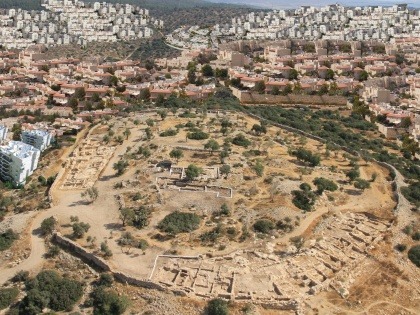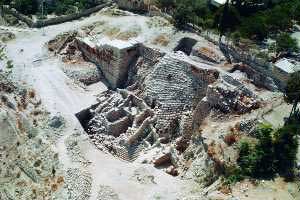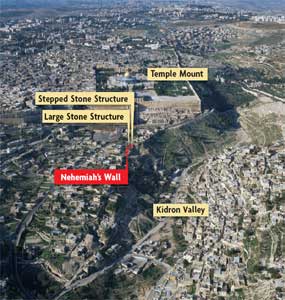Post Author: Bill Pratt
Eilat Mazar has potentially made another astounding discovery. She has unearthed a section of an ancient city wall of Jerusalem which she believes dates from the tenth century B.C. and would have been built by King Solomon.
According to Biblical Archaeology Review, “If Professor Mazar is correct about the dating, then it would seem to support the Biblical account of Jerusalem, and Israel, as being an organized society with a strong centralized government in the 10th century B.C., the time of King Solomon.”
However, there are skeptics of the dating of the wall and more analysis needs to be done to bolster Mazar’s case.
Science Daily reports, “The section of the city wall revealed, 70 meters long and six meters high, is located in the area known as the Ophel, between the City of David and the southern wall of the Temple Mount. Uncovered in the city wall complex are: an inner gatehouse for access into the royal quarter of the city, a royal structure adjacent to the gatehouse, and a corner tower that overlooks a substantial section of the adjacent Kidron valley.”
Mazar claims that the wall can indeed be dated to the tenth century and attributed to Solomon. She says:
A comparison of this latest finding with city walls and gates from the period of the First Temple, as well as pottery found at the site, enable us to postulate with a great degree of assurance that the wall that has been revealed is that which was built by King Solomon in Jerusalem in the latter part of the tenth century B.C.E.
This is the first time that a structure from that time has been found that may correlate with written descriptions of Solomon’s building in Jerusalem. The Bible tells us that Solomon built — with the assistance of the Phoenicians, who were outstanding builders — the Temple and his new palace and surrounded them with a city, most probably connected to the more ancient wall of the City of David.
Mazar specifically cites the third chapter of the First Books of Kings where it refers to “until he (Solomon) had made an end of building his own house, and the house of the Lord, and the wall of Jerusalem round about.”
We’ll see how this turns out, but it is certainly an exciting find.
 The Bible History Daily website announced in July 2011 that archaeologists had discovered the Apostle Philip’s tomb. Here is an excerpt from the article:
The Bible History Daily website announced in July 2011 that archaeologists had discovered the Apostle Philip’s tomb. Here is an excerpt from the article:
 We have featured the findings of archaeologist Eilat Mazar in previous blog posts (
We have featured the findings of archaeologist Eilat Mazar in previous blog posts (
